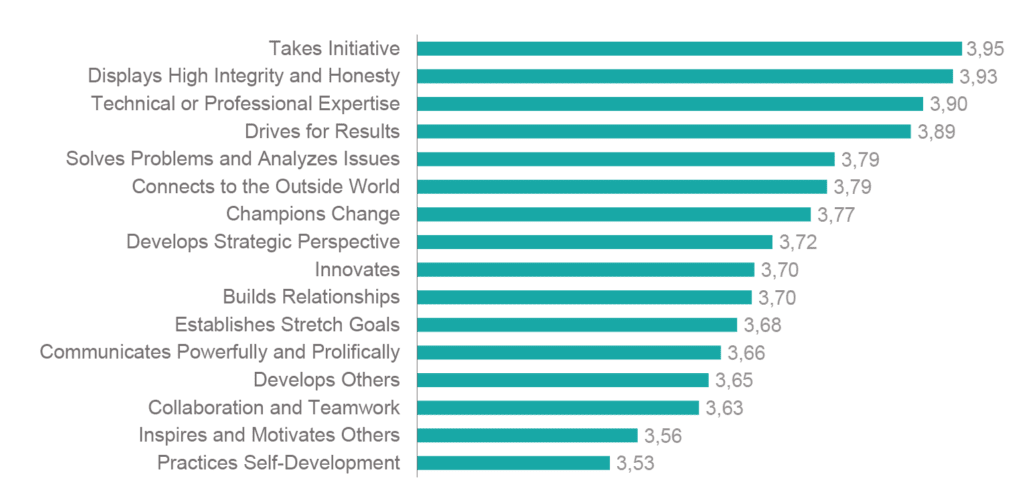
The secret of good leadership is very complex. There are many things that enable a company to be more profitable. There are other things that lead to technological progress and innovation. But there are also leadership strategies that help to value employees and motivate them. The real specialists manage to turn employees into proactive co-entrepreneurs and show them a sustainable perspective that not only helps them advance in the company, but in their own lives as well. Which attitude leads to this success? What have been the secrets of success in corporate management in recent years? And what will we need in the future? Let’s have a look at Scheelen & Zenger Folkmann’s organization and their leadership studies with 100 000 leaders worldwide, and the study with 500 EU leaders.
Joe Folkmann / Frank Scheelen.
Developing Extraordinary Leaders
The first question you might have is: can we develop extraordinary leaders? The answer in short is yes; we can develop leaders who inspire people to perform at a higher level, and this increases organizational productivity. There are many organizations that show consistent improvement in productivity over time as a direct result of their leadership development programs.
For instance, General Electric had a 5% per annum growth in employee productivity at a time when many organizations were languishing with 1% and 2% productivity improvement.
By emulating “evidence-based” medicine—gathering the aggregate data from 300,000 360-degree feedback instruments of 30,000 managers to produce a leadership development model that will have real value to the organization—we have identified 16 competencies that separate the best companies from the rest. Although the focus will vary by company as well as from industry to industry, we have found that these 16 competencies were the most consistent ones for all of the companies in our studies. Building and developing these leadership competencies, or strengths, then becomes the clear path to extraordinary leadership, to increasing productivity, and finally to the maximization of profits for the organization.
A Proven Model for Leadership
Our data-driven approach to understanding leadership has led to an empirically derived, scientifically grounded, proven model for developing leaders with 16 competencies of extraordinary leadership that can be categorized into five clusters of behavior:
- Focus on results
- Leading change
- Character
- Interpersonal skills
- Personal capability
The 16 competencies that fall into these categories, for instance displays high integrity and honesty and takes initiative, most frequently and consistently separate the highest scoring leaders from the others.
Differentiating Competencies and Performance: What’s the Link?
The links between these behaviors and performance may seem subtle, but they are critical. For instance, the leader who focuses on results, learns what gets focused on gets better: seeing improvement, people respond to this focus and follow it. The leader’s focus then creates a cycle of success. Another interesting observation is that first-rate, talented people are attracted to honesty and integrity and to leaders who are technically competent and good problem-solvers. What better way to attract the best talent then to display fair ethics, character, and personal capability?
Another example: leaders with interpersonal skills build cultures that inspire employees to want to work harder and care more about their jobs. People feel cared for and respected as the leader clears away obstacles, that in turn, creates a culture that encourages teams to flourish. As for leading change, this behavior is a vital, long term function to the organization and its people, because it ensures that the organization stays abreast of the world about it—thus maintaining competitive
advantage.
Not everyone is exceptional in every area, and we find this not to be a problem. Our research shows that the highest performing leaders are strong in three or four areas; however, these need to be spread out and not clumped in one area. A leader can be exceptional in just a few of the 16 competencies and be an extremely good leader who increases the productivity of the company.
One Pivotal Competency
Interestingly enough, we did find that there is one pivotal competency that is most powerful in distinguishing the top 10th percentile from the rest: inspires and motivates others to high performance. Falling in the interpersonal skills cluster of behaviors, this competency was voted by direct reports as the most important competency for leaders to possess. It was most correlated with employee engagement, and for many people it intuitively has the most obvious link to productivity. If this competency doesn’t come naturally, which for many leaders it does not, it can be overwhelming, even a burden. Not only are leaders expected to fulfill the duties of their positions, now, in addition to the responsibilities outlined in their job descriptions, they need to inspire and motivate people if the company is to succeed. However, contrary to popular belief, motivating others to high performance is relatively simple. It’s a process of developing in leaders, the competencies that support the behavior of inspiring and motivating people.
How Can We Help Leaders to Be More Inspiring?
Our empirical analysis revealed that each of the 16 differentiating competencies, including inspiring and motivating others, has several companion behaviors or competency companions. These competency companions are the handful of behaviors statistically correlated to the differentiating competency, and they are often counterintuitive. However, enhancing these companion behaviors strengthens the behavior. We link it to cross-training in the world of sports. Think, for example, of the runner who lifts weights along with her running program, or swims longs distance or engages in aerobic exercise. So, if an organization desires more inspiring and motivational leaders, one promising approach is to develop in its leaders the competency companions to this behavior. These include:
- setting stretch goals for employees
- establishing a clear vision and direction for the organization
- being more innovative and risk taking
- developing others
- practicing greater teamwork and collaboration
- demonstrating greater initiative
- being a role model
Leadership in Europe Study We have been interested how Leaders in Europe (specifically in the DACH Region) are ranked in the 16 competencies and specially in the most important Competencies like; “Inspiring and Motivating” and “Develop others and yourself”. Our study with 500 leaders from different industries and companies showed an interesting picture. We are very good at “Integrity and Initiative” and of course, in “Technical expertise” but the most important competencies that directly correlated with employee satisfaction, going the extra mile, like “Inspiring and Motivating” was one of the lowest competencies. This is also correlating with our own experience working with leaders in Europe, that most leaders got promoted into their positions about their technical expertise. But technical expertise and leadership does not have much in common. The most important competencies are the ones that have to do with people. Also, interesting for us was that females have been rated in these competencies better than their male colleagues in leadership.(If you are interested to learn about the complete study, take a look at the EU Tech Virtual Center library or ask us to send you the full presentation of it.
Frank Scheelen
CEO,
SCHEELEN® AG.























